Crew 290 Mission Summary
19 Jan 2024
Crew Members:
Commander and Health and Safety Officer: Madelyn Hoying
Executive Officer and Health and Safety Officer: Rebecca McCallin
Crew Scientist: Anja Sheppard
Green Hab Officer: Benjamin Kazimer
Crew Engineer: Anna Tretiakova
Crew Journalist: Wing Lam (Nicole) Chan
Mission Plan:
Project MADMEN (Martian Analysis and Detection of Microbial Environments) is an analog-based proof-of-concept adaptation of Project ALIEN, an exploration class mission concept to discover life on the surface of Mars and to study adaptation of microorganisms to the Martian environment as proposed to the 2020 NASA RASC-AL Challenge. Project ALIEN consists of a two-part plan to study the ability of microbes to adapt to the harsh conditions of the Martian surface, while simultaneously conducting a search for Martian life.
Proposed experiments for Project MADMEN, the two-week analog-based adaptation of Project ALIEN, primarily consist of conducting on-site field tests of geological samples aimed towards searching for life on Martian surface. To do this, a series of extravehicular activities (EVAs) were conducted to collect soil samples and test (while on the EVA at the sampling site) for evidence of potential signs of life. Field testing focused on detection of bacterial energy metabolism based on sulfur cycle, carbon cycle, and ATP synthesis. The entire Crew 290 team will work on Project MADMEN’s scientific goals.
Additional Crew 290 studies include psychosocial investigations and the use of ground penetrating radar. The psychosocial investigation seeks to compare interactions among crew and emergency response capabilities between Mars mission architectures. Results from this single-site architecture test will be compared to previous dual-site architecture experiments developed and tested by MIT. The ground penetrating rover study, run by the University of Michigan, is aimed at characterizing novel uses of Ground Penetrating Radar (GPR) for Martian applications. GPR is a sensor often used for understanding subsurface features, such as water deposits and geologic formations. There is currently a radar sensor on the Perseverance rover on Mars. However, very little work combines GPR with other sensor modalities, such as stereoscopic cameras. This research project utilized a custom data collection robotic platform titled REMI (Robotic Explorer for Martian Imagery) to explore various terrains and geologic sites in the MDRS area with a suite of sensors. Over the course of the field expedition, REMI collected about a terabyte of camera, GPR, positional data at a total of 48 sites. This data will be further processed by the University of Michigan Field Robotics Group for training machine learning models after the expedition is complete.
Crew Activities:
Sol 1 and 2 saw the first three EVAs, with training completed and initiation of REMI data collection by the end of sol 2. After some initial hiccups with the pH meter, the crew settled into the science and field operations associated with conducting Project MADMEN at MDRS. Field procedures flowed smoothly and Science Dome analysis established signs of microbial life, much to the excitement of the crew. The crew had plenty of fun too! Sol 3 introduced call signs for Melon (Madelyn), Chopper (Rebecca), Freebee (Anja), Funk (Ben), Roots (Anna), and PODO (Nicole). We spent time sewing on mission patches, playing games, doing gymnastics training, and exploring plenty of teambuilding activities. Stargazing in the observatory was a consistent favorite, and late-night team bonding forged strong friendships that will last well beyond the end of mission.


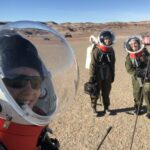
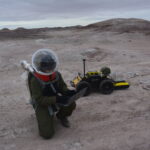

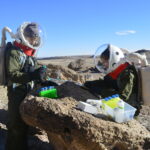
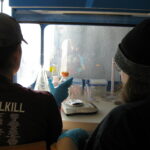
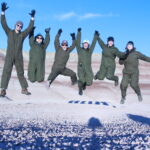
You must be logged in to post a comment.